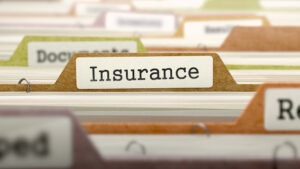Gone are the days when you had to stand in the middle of the street trying to wave down a taxi or spend time calling around to various cab companies to compare rates. The creation of ridesharing services like Uber and Lyft has certainly made it faster and more convenient when you need a ride. They tend to be much cheaper than a cab. They’ve also created thousands of flexible jobs. Most would agree that they’re a welcome addition to our roads.
However, ridesharing vehicles also get into traffic accidents. And, unlike the relatively straightforward process that you follow when you get into a wreck in your car, figuring out how to navigate them in an Uber or Lyft situation can be complicated.
It’s no wonder that those who drive for or use these services might wonder what to do in an accident situation: In the first quarter of 2020 alone, Lyft had more than 20 million users, while Uber riders took 18.7 million trips per day. Uber is available in 93 countries, while Lyft is active in nearly 700 U.S. and 12 Canadian cities. And there are currently about 5 million Uber drivers on the road alone.
How insurance works for rideshare drivers
Both Uber and Lyft require their drivers to have personal car insurance. They also provide company insurance. Furthermore, they encourage drivers to add “rideshare insurance” to their policies since drivers use their own vehicles for business reasons.
Rideshare insurance is provided to fill in any gaps not covered through company insurance. It’s an especially good idea considering that Uber and Lyft company insurance doesn’t always offer enough coverage. For drivers, the amount of company insurance available is determined by the driver’s status at the time of the accident. If they are searching for a ride the amount of coverage is much lower ($50k per person/$100k per accident in bodily injury coverage) than if they have accepted a ride or are in the midst of a ride ($1M in bodily injury per accident/not per person).
Drivers generally work within three different coverage periods for a ride:
- Period 1 – A driver’s app is on, and he’s available for rides; but Uber/Lyft company insurance only offers limited liability coverage during this time.
- Period 2 – A driver accepts a ride and leaves to get their passenger; company comprehensive and collision coverage kicks in
- Period 3 – The passenger has been picked up and is en route; the same coverage applies
Rideshare insurance is designed to pad the times when company insurance doesn’t provide all the coverage a driver might need or want. Several major carriers now offer it as an add-on to a standard policy.
Of course, a car accident in a rideshare vehicle is still a car accident, with the same requirements needed to file a lawsuit successfully. Georgia usually decides that liability in an Uber or Lyft accident lies with the driver, as they are classified as independent contractors.
Related: Uber and Accidents: Who Pays the Bill?
Related: Rideshare lawsuits a new specialty on the rise
What to do if you are in an accident while driving for or riding with Uber or Lyft?
Just how often do rideshare drivers get into accidents? According to one report, in 2017, there were 49 “Uber-related” deaths over 8.2 billion miles; in 2018, that number rose to 58 over just 1.3 billion miles. Still, the national average is about double that.
The first thing you should always do is make sure all parties involved are off the road and safe. Uber and Lyft both have reporting integrated into their apps, but they also encourage you to call 911 right away if anyone is hurt. Following their specific protocol when reporting the accident is very important, as it will serve as supporting documentation in any legal claim. For example, Uber requests that you contact them through the app, select “trip issues and adjustments,” then select “I was in an accident,” or you can talk to an agent by selecting “Call Support” in the app. While it is important to report the accident, if injured, you should consult with an attorney before providing any statements to the rideshare company or their representatives.
Other than following Uber or Lyft instructions for reporting an accident, the same best practices on what to do after a car accident apply.
Immediately seek medical attention if you are in any kind of pain, and keep excellent notes and records of your visits, diagnosis and recovery. If you can, take photos at the scene of the accident and the vehicles involved. Don’t throw away any clothing or other objects from the accident that could be used as evidence.
Keep all of your correspondence with Uber and/or Lyft, including chats through the app, texts and emails. Uber even has a place where you can download a lot of your personal data from the app, including metadata from support conversations on the app, times and locations of rides, and prices.
Most importantly, never try to settle an insurance issue yourself. Don’t speak to the other party’s insurance company, only your own.
Getting in a car accident is never fun and rarely easy to resolve. But it can be a lot more complicated in a rideshare situation when you are using your car for business or riding in someone else’s vehicle. Don’t try to navigate it alone. The team at Childers, Schlueter and Smith can help. If you or someone you know has been hurt in an Uber or Lyft accident, contact us here or give us a call at 1-800-641-0098 for a free consultation.

At Childers, Schlueter & Smith, our attorneys are dedicated to helping victims of personal injury and/or those who have lost a loved one to wrongful death determine their legal options. We are a distinguished law firm that is driven by years of experience and exceptional results. If you or someone you know has been injured due to another’s negligence, please contact our firm to discuss your legal options.














Comments for this article are closed.